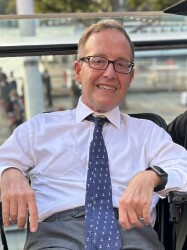BibTex format
@article{Jabbour:2021:10.1172/jci.insight.144068,
author = {Jabbour, R and Owen, T and Pandey, P and reinsch, M and Wang, B and King, O and Couch, L and Pantou, D and Pitcher, D and Chowdhury, R and Pitoulis, F and Handa, B and Kit-Anan, W and Perbellini, F and myles, R and Stuckey, D and dunne, M and Shanmuganathan, M and Peters, N and Ng, FS and weinberger, F and Terracciano, C and smith, G and Eschenhagen, T and Harding, S},
doi = {10.1172/jci.insight.144068},
journal = {JCI Insight},
pages = {1--13},
title = {In vivo grafting of large engineered heart tissue patches for cardiac repair},
url = {http://dx.doi.org/10.1172/jci.insight.144068},
volume = {6},
year = {2021}
}

